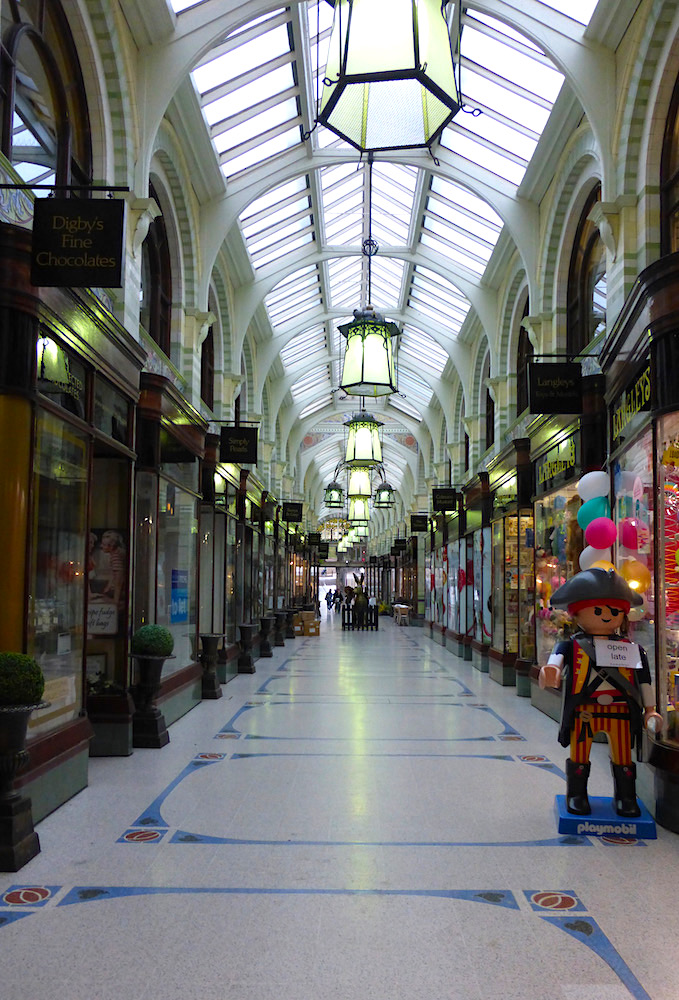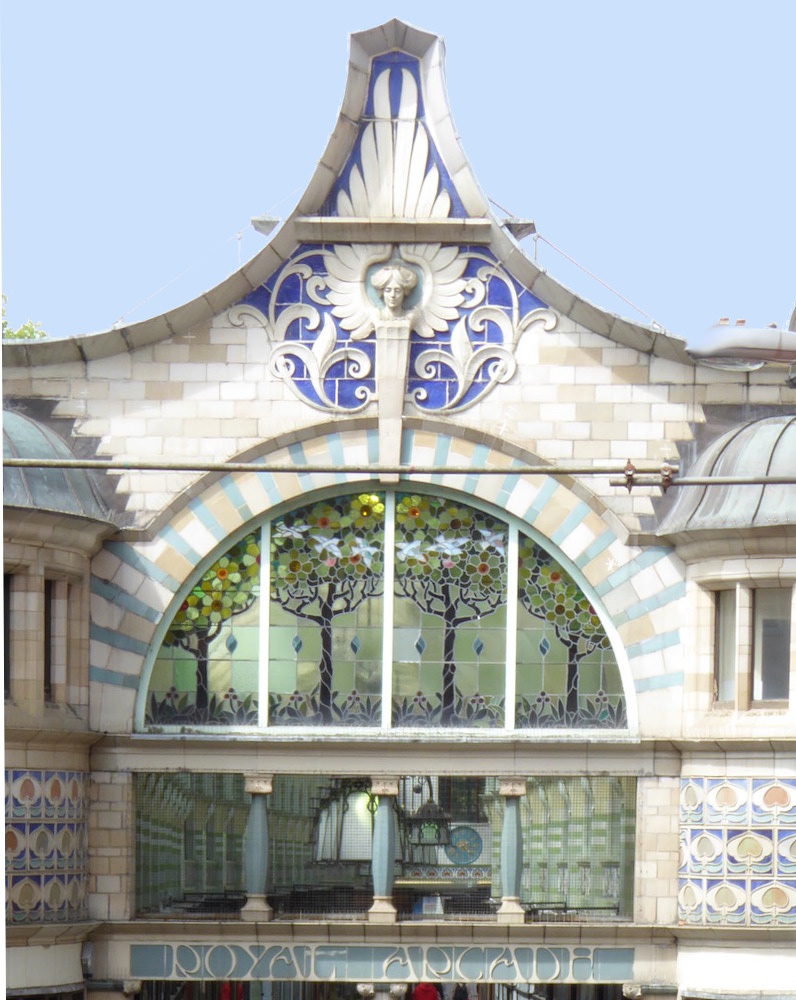Photographs by Rita Wood taken in 2017, except for the one on the top right. This was taken in 2018 by Jacqueline Banerjee, who also wrote the commentary and formatted the piece. You may use these images without prior permission for any scholarly or educational purpose as long as you (1) credit the photographer and (2) link your document to this URL in a web document or cite the Victorian Web in a print one.


The Royal Arcade, a Grade II* listed building in Norwich. The Royal Arcade's triple round-arched entrance on Gentleman's Walk is pleasant but unremarkable. It was designed by the city surveyor of the time, Joseph Stanard the younger (1795-1850) for what was then the Royal Hotel, and added in 1846. But this "perfectly innocent" frontage is misleading (Pevsner and Wilson 314): it gives way to an Arts and Crafts treat created by architect George John Skipper (1856-1948) at the end of the Victorian period. Opened as an arcade in 1899, after the hotel had moved, it comprises a 75-metre-long covered walkway between "rows of identical bowed glass shop fronts" with another storey above and "arched timber braces to the roof" (Pevsner and Wilson 314). Note that the attractively patterned floor tiling and lighting fixtures were later additions, from a 1980s restoration.


Above the shop fronts are brilliantly patterned tile panels with elegant peacock and flower motifs, which might help to prepare the keen-eyed passer-by for an even greater surprise at the other entrance of the arcade on the road called Back of the Inns.

Close-up of one of the peacock-patterned tile panels.


At this entrance, the arcade, together with the adjacent shop, provides "a spectacular display of English Arts and Crafts when, in spirit though not in form, it came nearest to Continental Art Nouveau: coloured tiles with flower and tree motifs, tracery of a flat, curly Goldilocky kind, lettering that could not be made more telling" (Pevsner and Wilson 314). The stained glass tree design should get a proper mention here too. The faience was designed by William James Neatby (1860-1910), and made by Doulton (Pevsner and Wilson 314). Earlier in the Pevsner book, the arcade is described as standing "at a high point in English Arts and Crafts" (159).

It is interesting to see the angular lines of Art Deco creeping in at the base of this column.
Bibliography
Pevsner, Nikolaus, and Bill Wilson. Norfolk 1: Norwich and North-East (The Buildings of England). 2nd ed. London: Penguin, 1997.
"Royal Arcade." Historic England. Web. 24 January 2020.
"Royal Arcade." The Norwich 360 website (this has a panoramic view). Web. 24 January 2020.
Created 24 January 2020